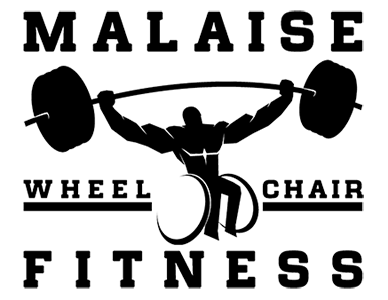I am finally FREE again. It has been a couple weeks since any serious restrictions have been lifted and in these two weeks I was able to actually workout with an exercise NOT involving Dips or Pull Ups. Don’t get me wrong, those are fantastic exercises, but when those are pretty much the ONLY exercise you are doing for a year, it gets rough.
I left in a few sections below from my previous posts as I think that info is valid for ANYONE looking for more info on dealing with wounds, the only real update is in the Training section.
Adding Outside Cardio
With restrictions lifted I am still including some battle ropes and punches but the majority of my cardio involves getting out in my handcycle. I live in Santa Rosa Beach Florida where the weather is fantastic most of the year. Getting outside to exercise is amazing for the body and mind. I have been going for a morning ride 3-4 days a week. I have a racing handcycle so it is a bit of a pain to get into but thanks to my Super Duper wife, I get some help getting my feet locked in.
If you can, get a handcycle. They are amazing.
Training Update
I am now able to do a lot more with free weights again. I have started doing some flat bench work with Regular Bench Presses and Close Grip Bench Presses. It will be some time before I begin any incline or military presses with a barbell. Better safe than sorry on those two as they put a lot of weight and stress on the rear end.
I am also adding in lying down rows with a barbell, as you can see in the photo below. Weighted Pull Ups and Dips are still a big part of the routine but it is VERY nice to be able to mix back in some variety.
Lying Down Barbell Rows
My Advice
As I noted in previous posts I had been battling the pressure wound for well over a year. My advice to anyone in a wheelchair that gets a wound like this on their bottom to not waste more than a month or two seeing a wound clinic or wound doctor. They cannot help us. For wounds like this there is a 99% chance surgery is the only answer. Please seek out a reconstructive surgeon as soon as humanly possible to get your life back on track as soon as you can. You are wasting your time, and money, seeing a wound doctor.
Surgery
From Previous Post: The surgery is called a wound flap. I had one done 10 years ago and the recovery time had scared me off of going through it again. I kept going to wound doctors hoping the tiny bit of improvement would continue but it hit a brick wall several months ago. The surgery for my situation took about 2 hours. When I went in for the consult with the surgeon he looked at my wound for all of about 5 seconds before knowing exactly what he needed to do and surgery was the only option. Again, we are wasting our time seeing a regular wound doctor.
Recovery
From Previous Post: The recovery time 10 years ago scared me off going through this again. I was mistaken as it is not nearly as bad as back then. After the surgery I was in the hospital for one week, not the 3 weeks I was in 10 years ago. After the week I was actually able to get into my chair to get into the car for the ride home, while riding on my side to keep any weight off the side that was operated on.
The restrictions and timeline are as follows:
First 2 weeks after surgery, virtually no time up at all. This is the biggest challenge but the first week of this is spent in the hospital so it is 1 week at home, no getting up.
Weeks 3-4 I am allowed up 30 minutes, for every 2 hours. This is still very limited but allows me to do the necessities and heavily lifts the burden off of my wife.
Weeks 5-6 I am allowed up 1 hour, for every 2 hours. Same as above, but now I at least have time to get up and make my own meals.
I am currently in the middle of week 3, so heavy restrictions but I am able to do stuff up in my chair.


